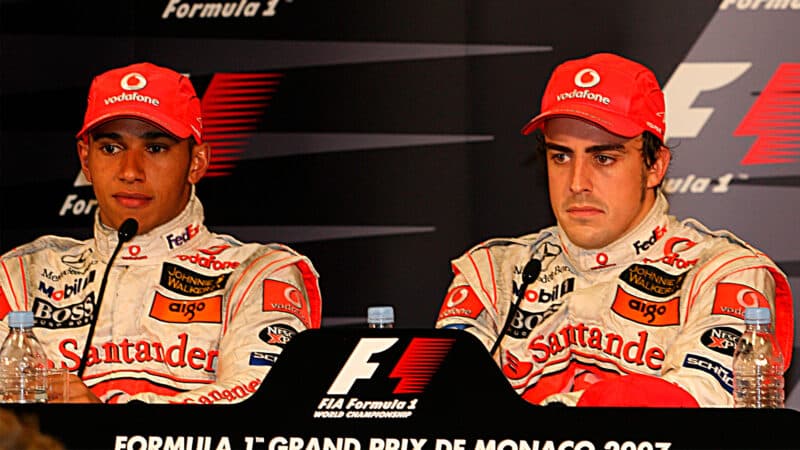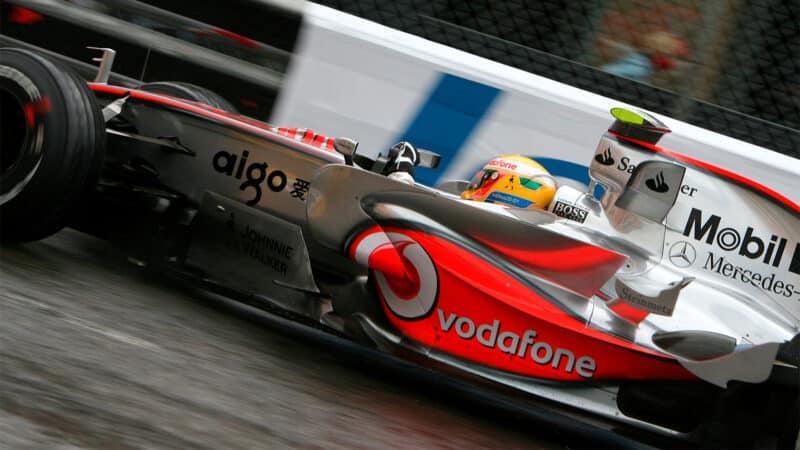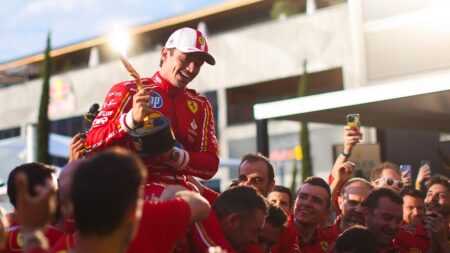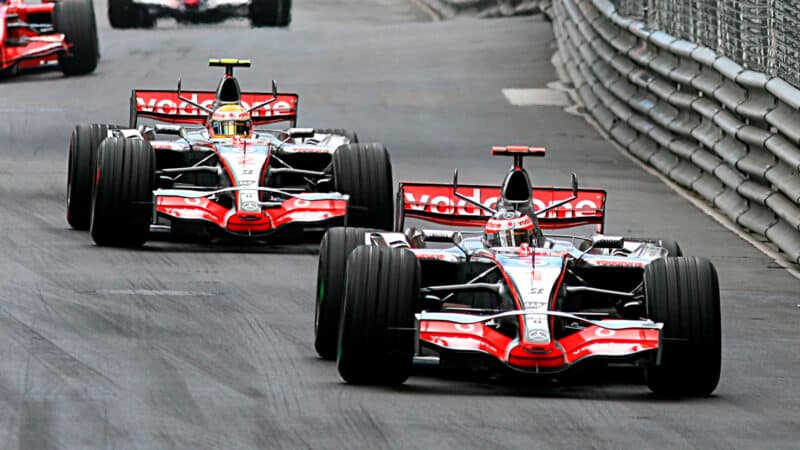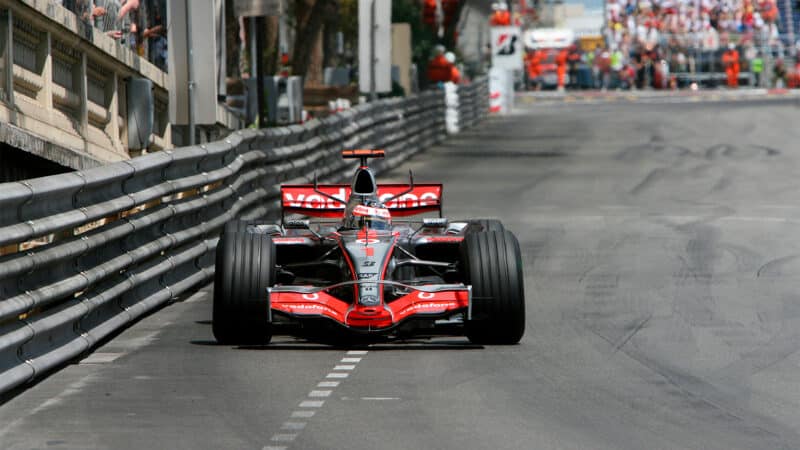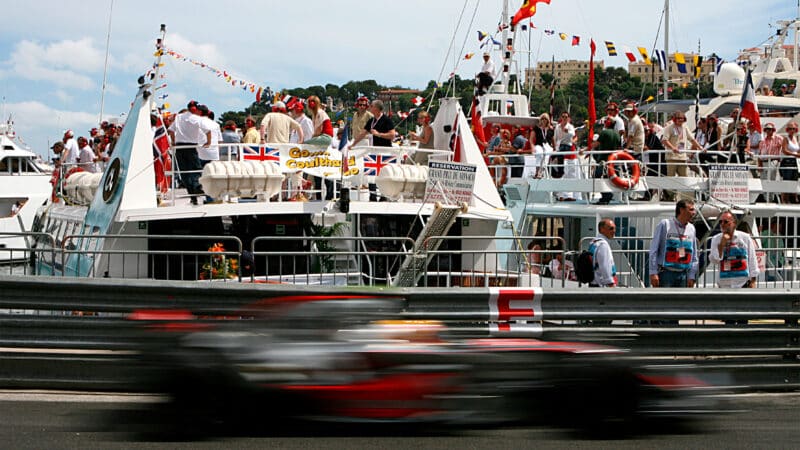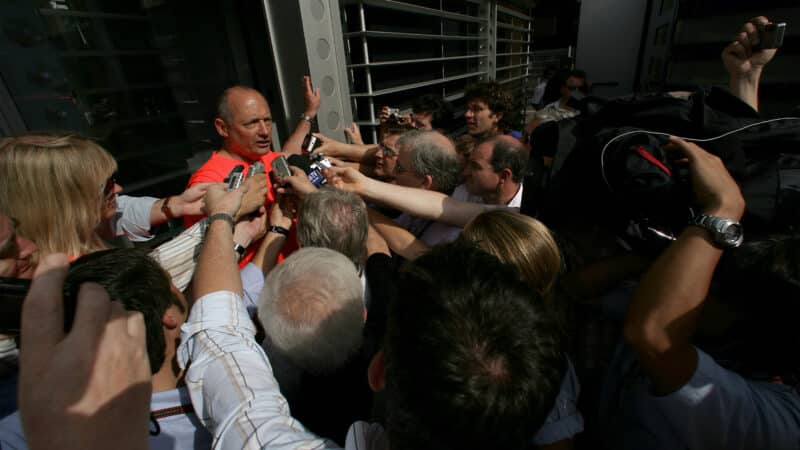Alonso improved but was still behind Hamilton’s first run. Alonso went out first for the final runs and finally managed to beat Hamilton’s initial time to be on a provisional pole. But as Hamilton went through the Sector 1 timing beam he was already 0.35sec faster. He then encountered Mark Webber’s Red Bull for several corners and pole was gone. But allowing for the fuel difference, even that Webber-compromised lap of Hamilton’s was faster than Alonso. He’d been set for a lap around 0.5sec faster despite carrying 0.3sec-worth more fuel!
It was a disappointment for Hamilton not to be on pole when he was clearly faster on the day. But he had the consolation of those potentially five extra low-fuel laps up to the first pit stops. All he had to do was tail Alonso, wait for him to pit then let rip with the low-fuel laps and he should have comfortably overcut Alonso’s fuel-heavy car.
But it didn’t happen that way. Unbeknown to Hamilton, once he had failed to take pole, he’d lost his priority. Team boss Ron Dennis’ only concern was to ensure a 1-2 finish for the team. He was not in the least bit interested in letting them fight for track space. So as soon as Alonso and Hamilton got down to Saint Devote in that order, that was always going to be how they finished.
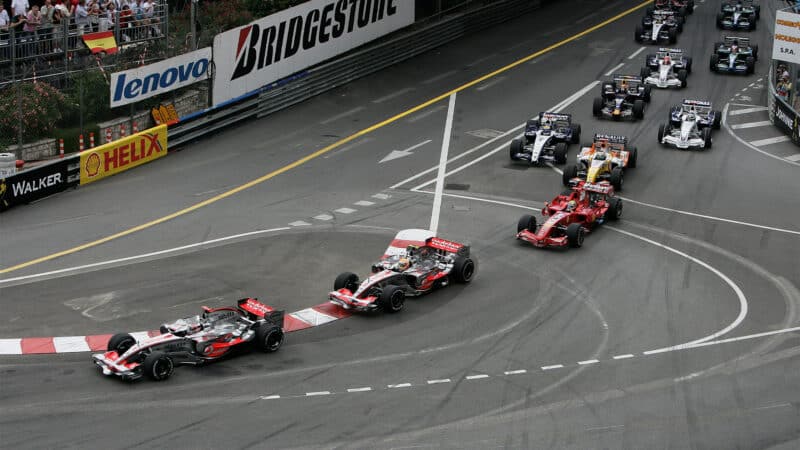
Alonso leads Hamilton through Turn 1
Getty Images
As the pit stop window opened Alonso pushed hard and Hamilton – his front tyres graining from being in Alonso’s turbulent air – initially couldn’t respond and fell back. But as the graining phase completed, so he began to cut back into Alonso’s gap. It was at 4.2sec as Alonso pitted. With Alonso fuelled for 29 laps up to the second stops, he was heavier to the tune of 1.2sec. Even allowing for some tyre deg, five laps should comfortably have been enough for Hamilton to have overcut himself into the lead. But he was pulled in after just three laps – and came out still behind.
It made sense for the team not only to keep them from fighting for track space but also to get both stops completed before any safety car appeared. But Hamilton was already beginning to feel the competitive paranoia that is there with any top driver. Why had they not let him have his five laps? Why had he carried all that extra fuel if they weren’t going to allow him to have the benefit of it? Was there a plan to win Alonso this race despite Hamilton’s greater speed here?
But there were still the second stops. Perhaps that’s when he’d get to use his extra fuel. So he chased after Alonso and, noting this, Alonso stepped up the pace. They were each breaking and re-breaking the lap record (Hamilton still with around 10kg more fuel in his car). This was of deep concern to the McLaren pitwall because what they, but not the outside world, knew was that its chosen brake material was very marginal. A 1-2 was in serious danger of going up in a cloud of brake dust.
